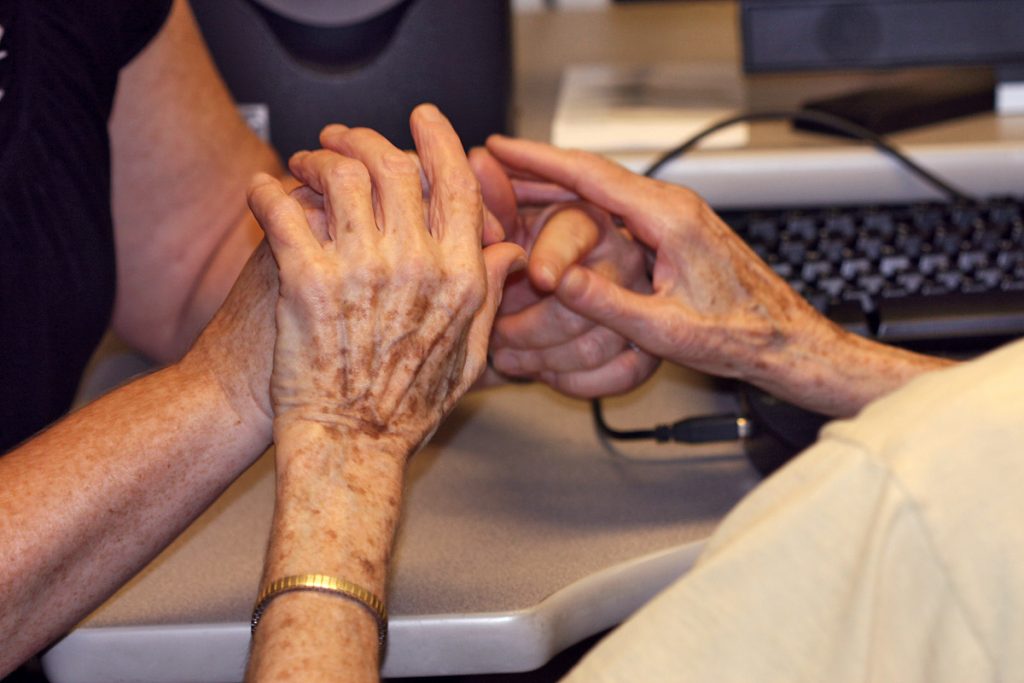A new language for DeafBlind people uses touch to communicate

New languages are not common. However, a new language has been created here in the Pacific Northwest. The name of the language is Protactile.
Jelica Nuccio helped to create the language. She is DeafBlind (she can neither hear nor see). Nuccio worked at the DeafBlind Service Center in Seattle. At first, she wasn’t thinking about a new language. She just wanted to communicate directly with other DeafBlind people.
So Nuccio worked with other DeafBlind people to decide what worked best for them. The new language is similar to American Sign Language used by people who are deaf, but it does not rely on sight. Instead, it uses touch to share information. In fact, it often uses both hands of both people to communicate with each other, all at the same time.
Protactile is growing as more people use it. Now Nuccio is training interpreters at Western Oregon University in Monmouth. These interpreters will be able to help DeafBlind people communicate with people who can see and hear.
-This story was first published in ESOL News Oregon January 7, 2022.
Check
Discuss
- Do you know how to express yourself in more than one language? How many languages do you know? How did you learn them?
- Have you ever seen people communicate with sign language? How is it different than spoken language?
- Have you ever seen a book in braille? How is it different from a printed book?
- This article is about people who are both deaf and blind. This means they need a totally different way to communicate. The article says both people use touch by using both hands to communicate when they use Protactile. How do you think touch can replace sight and sound?
Write
- Imagine if you lost one of your five senses (sight, hearing, touch, taste, or smell) now. How would you adapt to your new reality?
- Imagine if you were born without one of your senses. How would your life be different from your life today (assuming you were actually born with your sense of sight and hearing)?
- In what ways does Protactile replace speaking, listening, and hearing all at once?
- What are the other three senses we have besides sight and hearing? How do we use these senses to communicate?
Sources
Collazos, Olga. “Protactile a Way for Deaf-Blind People to Communicate through Touch.” My Portal, www.dicapta.com/en/blog-en/news/262-tactile-communication.
Quartz. “Pro-Tactile ASL: A New Language for the DeafBlind – YouTube.” Www.youtube.com, 31 Oct. 2016, www.youtube.com/watch?v=9GrK3P15TYU.
Van Wing, Sage. “A New Language Has Been Born in the Northwest.” Opb, 5 Jan. 2022, www.opb.org/article/2022/01/05/new-language-for-deaf-blind-born-in-northwest/. Accessed 6 Jan. 2022.

